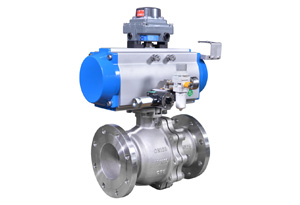Jul. 05, 2021
Can a Ball Valve Be Used As a Control Valve?
If you have basic valve knowledge, you may be familiar with ball valves-one of the most common valve types today. The ball valve is usually a quarter-turn valve with a perforated ball in the middle to control the flow. These valves are known for their durability and excellent shutoff but do not always provide very precise control. Let's talk about when you can use a ball valve as a control valve.
Although the ball valve is not the best device to control the flow, it is still widely used due to its cost-effectiveness. You can use ball valves in applications that do not require precise adjustment and control. For example, a ball valve should have no problem keeping a large tank full at a certain level within a few inches.
As with any equipment, you need to consider the complete process conditions before choosing a valve. This includes product or material, pipe size, flow rate, etc. If you want to control expensive materials and you are worried about wasting them, you may not want to rely on ball valves.
Ball valves are not very precise because their adjustment is not proportional to the large flow rate provided by the open hole. There are also "slop" or "play" between the stem and the ball that hinder precise control. Finally, the amount of torque required to adjust the ball valve does not allow fine adjustments near the "closed" and "open" positions.

Valve
When you need precise control of your application, the globe valve will be more precise than the ball valve. Globe valves are considered the industry standard for control valves because they are good at regulating flow, while ball valves are more suitable for on/off control without pressure drop.
If ball valves must be used to control the process, different types of ball valves may need to be considered depending on the application. A trunnion or v-port ball valve will perform better and allow more accurate adjustments in certain situations.
The trunnion ball valve has an additional mechanical anchoring of the ball at the top and bottom. They are connected by a splined or keyed valve stem, eliminating any play between the ball and the valve stem. The V-port ball valve has a "V"-shaped ball instead of a standard round hole. This allows more control because of the tapered opening, allowing for more linear flow.
We are ball valve manufacturers. If you are interested in our products, please feel free to contact us.
Headquarter Add.: SUPCON Park, No.309 Liuhe Road, Binjiang District, Hangzhou, 310053, China.
Tel.: +86 571 8111 9774
Fax: +86 571 8111 9737
E-mail: [email protected]
